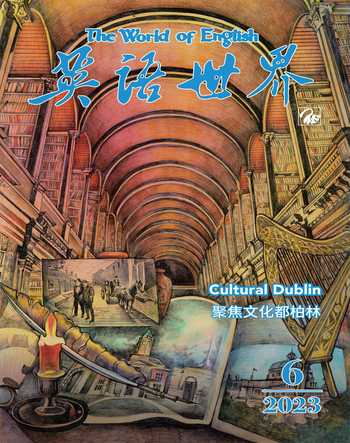Master’s Mural Hidden in a Sydney Bottle Shop隱于悉尼一酒窖的大師壁畫
伊麗莎白·福蒂斯丘 張祺/譯
Customers browsing the shelves at Elizabeth Bay Cellars, an upmarket eastern suburbs bottle shop, would be startled to know they are standing just metres away from an early work by one of the most revered Australian artists of the modern era.
在悉尼東郊的一家高檔瓶售酒商店“伊麗莎白灣酒窖”,瀏覽貨架選購酒品的顧客會驚訝地發現,距離他們所站之處不過幾米開外,就是澳大利亞一位最受尊敬的現代藝術家的一幅早期作品。
This forgotten mural, mostly hidden behind the walls of the shops coolroom, is by the late Jeffrey Smart, whose work was celebrated in a centenary exhib-ition at the National Gallery of Australia opening on December 11, 2021.
這幅被遺忘的壁畫由已故大師杰弗里·斯馬特創作,畫作大部分隱藏在商店冷藏室的墻壁后面。2021年12月11日,澳大利亞國立美術館(NGA)為斯馬特舉辦了一次百年誕辰紀念展以作慶賀。
The story behind how the work of the master, who was feted for his geometrically precise urban landscapes, ended up in Elizabeth Bay goes back some 70 years.
這位大師因其城市景觀繪畫的幾何精確性而備受贊譽。其作品為什么會出現在伊麗莎白灣,背后的故事可以追溯到大約70年前。
In 1951 Smart, then a young, impoverished artist, arranged to paint an interior mural at Milanos restaurant in return for meals.
1951年,當時的斯馬特還只是一個貧窮的年輕藝術家,為換取伙食,他準備為米拉諾餐廳作一幅室內壁畫。
After Milanos changed hands in March 1958 to become the plush eatery Primos Lafayette, Smart again worked on the murals. Its unclear whether he started again or merely touched up the earlier work. Either way, the finished murals depicted an Italian priest in a Capello Romano hat guiding a visiting family to landmarks such as the Leaning Tower of Pisa and the Forum Romanum.
1958年3月,米拉諾餐廳易主成為普里莫拉斐特豪華餐廳,斯馬特再度為餐廳創作壁畫。他是創作了一幅全新作品,還是僅僅潤色了先前的作品——目前并不確知。無論哪種情況,完成的壁畫描繪的就是一位戴著卡佩羅羅馬帽的意大利牧師,他正帶領來訪的一家人參觀比薩斜塔和古羅馬廣場等地標。
The cassocked priest and the little family looked down over a cavalcade of monied diners until the early 1980s, when Primos closed and businessman Michael David took over the building, opening Elizabeth Bay Cellars.
那位身著長袍的牧師和成員稀少的這一家人多年來一直俯視著熙來攘往的富豪食客們,直到20世紀80年代初,普里莫餐廳關閉,商人邁克爾·戴維接管了這座建筑,開設了伊麗莎白灣酒窖。
To install a walk-in coolroom, David demolished one interior wall of Primos dining room along with its mural. The mural on the opposing wall remained, but was mostly covered over when the coolroom was installed.
為了安置步入式冷藏室,戴維拆除了普里莫餐廳的一面內墻及其壁畫。對面墻上的壁畫雖然保留了下來,但冷藏室建好后,大部分壁畫都被遮住了。
But now Dr Rebecca Edwards, co-curator of the exhibition Jeffrey Smart at the NGA, says the work must be saved. “They might not be the greatest examples of Smarts work, but they do represent a really key part of Australian art history that is under-explored because its not well represented,” she said.
不過現在,NGA杰弗里·斯馬特展覽的聯合策展人麗貝卡·愛德華茲博士表示,必須挽救這幅作品。她說:“它們可能不是斯馬特最偉大的作品,但它們確實代表著澳大利亞藝術史中一個非常重要的部分——這部分歷史沒有很好地展現給世人,所以也沒有得到充分探索。
“Weve got to keep the traces that we do have if were ever going to be able to piece it back together. Mural paintings by nature are quite ephemeral. As soon as the buildings demolished, or someone renovates, theyre gone.”
“如果想把這段歷史拼齊復原,就必須保護好我們目前所擁有的遺跡。就其本質而言,壁畫可以說壽命短暫。建筑物一旦被拆除,或有人進行翻修,附著其上的壁畫就會隨之消失。”
Barry Pearce, former head of Australian art at the Art Gallery of NSW, admits he has changed the opinion he formed of the Primos murals in the 1980s, when he was called in to assess them for possible removal and preservation.
新南威爾士州美術館澳大利亞藝術部前主管巴里·皮爾斯承認,他已經改變了20世紀80年代自己對普里莫壁畫的看法,當時他曾被要求評估這些壁畫是否可能被轉移保護。
“I now think they are far more interesting than I did,” Pearce said. “In retrospect I find them quite charming and they show you (Smarts) draughtsman skill. Its amazing, really.”
“我現在認為它們比我原來想象的要有趣得多。”皮爾斯說,“回想起來,我覺得它們非常令人著迷,它們展示了(斯馬特的)繪畫技巧。這真的很神奇。”
Pearce recalls Michael David contacting AGNSW after buying the building, thinking the murals might be worth saving. Pearce said then director Edmund Capon was not in favour because of the tens of thousands of dollars involved. Pearce also contacted Smart, who wrote back that “the so-called murals are simply not worth all the bother and I would rather they were demolished”.
皮爾斯回憶說,邁克爾·戴維在買下這座建筑后,認為這些壁畫可能具有留存的價值,于是聯系了新南威爾士州美術館。皮爾斯說,時任館長埃德蒙·卡彭對此并不贊成,因為該項目要花費成千上萬。皮爾斯還聯系了斯馬特,斯馬特回信稱:“那些所謂的壁畫根本不值得這樣大費周章,我寧愿它們被拆除。”
Smarts comment must be taken in the context that he thought every painting he started was “doomed to failure”, Pearce said.
皮爾斯說,斯馬特的評論必須放在一定的背景下考慮,即他一向認為自己創作的每一幅畫都“注定要失敗”。
“He kept comparing himself to the great Renaissance painters that he was living among (in Italy),” he said.
他說:“斯馬特曾定居意大利,他總把自己與同樣生活在意大利的文藝復興時期的偉大畫家作比較。”
Dr Edwards said the Primos mural links Smart, who died in his adopted home of Tuscany in 2013, firmly to the French “Tubist” and muralist Fernand Léger, whose classes Smart attended in Paris in 1949—50.
斯馬特于2013年在第二故鄉托斯卡納的家中逝世。愛德華茲博士表示,普里莫的壁畫將斯馬特與法國“以管狀組合呈現物象”的立體派壁畫家費爾南·萊熱緊密聯系在一起。1949至1950年間,斯馬特在巴黎曾上過萊熱的課。
“Smarts working really closely with Léger, and he returns to Australia and settles in Sydney. In that decade he paints about eight mural schemes, which is not well known because they dont really exist,” Dr Edwards said.
愛德華茲博士說:“斯馬特與萊熱的合作非常密切,后來他回到澳大利亞并定居悉尼。在那10年里,他繪制了大約8幅壁畫的草圖,但這并不廣為人知,因為它們并不真實存在。”
Smart didnt go in for art prizes but he graciously wrote to Francis Giacco in 1994 when Giacco won the Archibald Prize. Next time Smart was in Sydney, he and Giacco viewed the remains of the murals together.
斯馬特對藝術獎并不感興趣,但當弗朗西斯·賈科1994年獲得阿奇博爾德獎時,他卻親切地寫信祝賀賈科。當斯馬特再次來到悉尼時,他和賈科一起欣賞了殘存的壁畫。
“I dont think he took them too seriously,” Giacco said.
“我覺得他不太把這些壁畫當一回事。”賈科說。
Stuart Purves, whose Australian Galleries has represented Smart since the 1970s, said the Primos mural should be saved.
斯圖爾特·珀維斯的澳大利亞畫廊自20世紀70年代以來一直為斯馬特做代理,他認為普里莫的壁畫應該保存下來。
“Why dont we get this mural back?” Purves said. “Its to do with the growing up of the cultural attitude of Australia. Its a test of our cultural courage.”
“我們為什么不把這幅壁畫復原取下來?”珀維斯說,“它與澳大利亞文化態度的發展息息相關。這是對我們文化勇氣的一次考驗。”
(譯者為“《英語世界》杯”翻譯大賽獲獎者)

